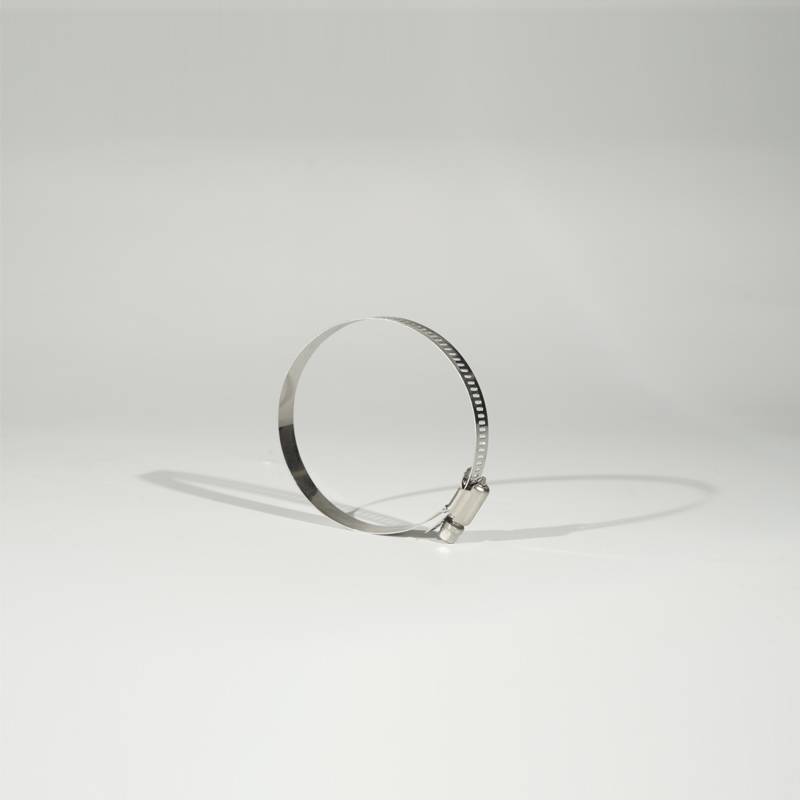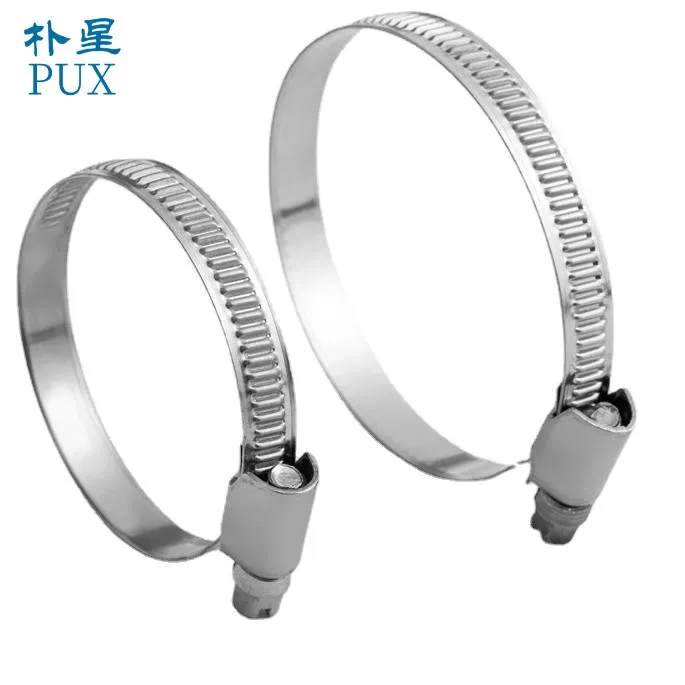- Phone:+86-17331948172 +86-0319-8862898
- E-mail: inquiry@puxingclamp.com
Mar . 05, 2025 03:10 Back to list
stainless steel hose clip
Selecting the right hose clamps for fuel lines is crucial for ensuring safety, reliability, and performance in various applications, from automotive uses to industrial machinery. These small yet mighty components play a significant role in preventing fuel leaks, which can lead to dangerous situations and costly repairs. Whether you are a seasoned mechanic or a DIY enthusiast, understanding the nuances of hose clamps can significantly enhance your application's efficiency and safety.
The method of installation is another factor that impacts the performance of hose clamps. It is essential to ensure that clamps are not over-tightened, as this can damage the hose and lead to failure of the seal. Conversely, under-tightened clamps can result in fuel leakage. Proper training and experience are invaluable in achieving the correct clamp tension, particularly for professional mechanics. Using a torque wrench provides a reliable means of achieving accurate and consistent tension across different clamps. When replacing or installing new fuel line hoses, it can also be advantageous to consider the overall system design. Factors such as hose routing and vibration dampening play a role in the longevity and performance of the hose assembly. Securely mounting fuel lines and minimizing excess movement can prevent undue stress on the hose clamps and fittings, further enhancing system durability. In addition to these technical considerations, adhering to industry standards and guidelines is vital for ensuring safety and compliance. Organizations such as the Society of Automotive Engineers (SAE) provide detailed standards for fuel system components, including hose clamps. Following these standards helps guarantee that the components meet necessary performance and safety criteria. Finally, choosing clamps from reputable manufacturers known for quality and reliability is essential. Brands that invest in research and development tend to offer superior products, engineered for top performance. In addition, working with trusted suppliers provides access to additional resources, such as technical support and detailed product data, enhancing the overall trustworthiness of the selected components. In conclusion, ensuring the safe and efficient operation of fuel lines hinges on selecting and maintaining appropriate hose clamps. By understanding materials, design types, sizing needs, temperature tolerance, installation techniques, and industry standards, individuals and companies can significantly boost the performance and safety of their systems. From high-performance racing cars to everyday commuter vehicles, the right hose clamps are indispensable in creating secure and reliable fuel delivery systems.


The method of installation is another factor that impacts the performance of hose clamps. It is essential to ensure that clamps are not over-tightened, as this can damage the hose and lead to failure of the seal. Conversely, under-tightened clamps can result in fuel leakage. Proper training and experience are invaluable in achieving the correct clamp tension, particularly for professional mechanics. Using a torque wrench provides a reliable means of achieving accurate and consistent tension across different clamps. When replacing or installing new fuel line hoses, it can also be advantageous to consider the overall system design. Factors such as hose routing and vibration dampening play a role in the longevity and performance of the hose assembly. Securely mounting fuel lines and minimizing excess movement can prevent undue stress on the hose clamps and fittings, further enhancing system durability. In addition to these technical considerations, adhering to industry standards and guidelines is vital for ensuring safety and compliance. Organizations such as the Society of Automotive Engineers (SAE) provide detailed standards for fuel system components, including hose clamps. Following these standards helps guarantee that the components meet necessary performance and safety criteria. Finally, choosing clamps from reputable manufacturers known for quality and reliability is essential. Brands that invest in research and development tend to offer superior products, engineered for top performance. In addition, working with trusted suppliers provides access to additional resources, such as technical support and detailed product data, enhancing the overall trustworthiness of the selected components. In conclusion, ensuring the safe and efficient operation of fuel lines hinges on selecting and maintaining appropriate hose clamps. By understanding materials, design types, sizing needs, temperature tolerance, installation techniques, and industry standards, individuals and companies can significantly boost the performance and safety of their systems. From high-performance racing cars to everyday commuter vehicles, the right hose clamps are indispensable in creating secure and reliable fuel delivery systems.
Share
Latest news
-
Large Stainless Steel Adjustable American Type Hose Clamp-Hebei Pux Alloy|Durable Stainless Steel Construction&Adjustable Design
NewsAug.15,2025
-
Large Stainless Steel Adjustable American Type Hose Clamp - Hebei Pux Alloy Technology Co., Ltd
NewsAug.15,2025
-
Large Stainless Steel Adjustable American Type Hose Clamp - Hebei Pux Alloy Technology Co., Ltd|Adjustable Design&Corrosion Resistance
NewsAug.15,2025
-
High Quality German Style Mini Stainless Steel Hose Clamps
NewsAug.15,2025
-
Large Stainless Steel Adjustable American Type Hose Clamp-Hebei Pux Alloy Technology Co., Ltd|Corrosion Resistance, Adjustable
NewsAug.15,2025
-
Large Stainless Steel Adjustable American Type Hose Clamp - Hebei Pux Alloy Technology Co., Ltd
NewsAug.14,2025




